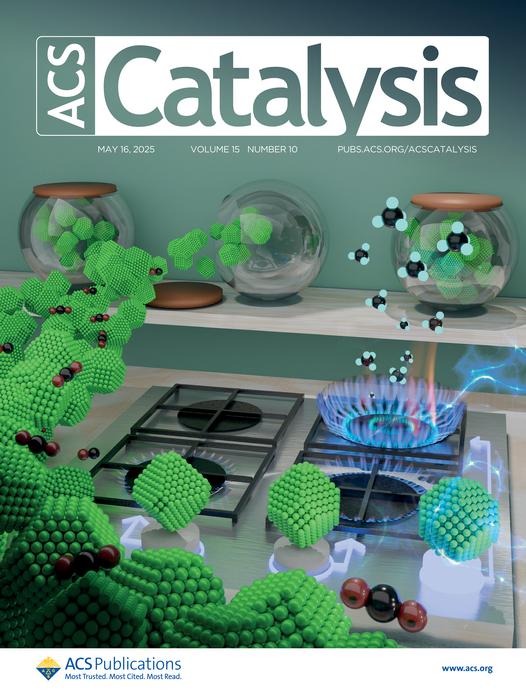Milan, June 5, 2025 – The relentless emission of carbon dioxide (CO₂) into the Earth’s atmosphere has become a major concern in our ongoing battle against climate change. As researchers globally seek innovative ways to mitigate the environmental impact of CO₂, a groundbreaking study from the Politecnico di Milano presents a remarkable solution: transforming this greenhouse gas into valuable fuel. This transformative breakthrough was prominently featured on the cover of the esteemed journal, ACS Catalysis, highlighting the importance and potential of this research.
At the forefront of this transformative research is a team comprised of talented scientists including Gabriele Spanò, Matteo Ferri, Raffaele Cheula, Matteo Monai, Bert M. Weckhuysen, and Matteo Maestri. They meticulously explored a process that converts carbon dioxide and hydrogen into methane, leveraging cutting-edge nickel nanoparticles. Their study, titled “Deciphering Size and Shape Effects on the Structure Sensitivity of the CO₂ Methanation Reaction on Nickel,” delves deep into the intricate relationship between the physical characteristics of these nanoparticles and the reaction rate for methanation, opening up new opportunities for sustainable energy production.
The Politecnico di Milano’s Laboratory of Catalysis and Catalytic Processes (LCCP) is recognized on a global scale as a leader in heterogeneous catalysis. Their research aims to transform CO₂, a notorious pollutant, into sustainable fuels. By focusing on the chemistries of pressing climate issues, LCCP shines a spotlight on the feasibility of utilizing waste gases as valuable resources rather than environmental burdens. The innovative approach taken in this study not only adds to the existing body of knowledge but also proposes significant practical applications for reducing atmospheric CO₂ levels.
Employing a combination of atomistic simulations alongside experimental methodologies, the research team discovered that specific attributes of nickel nanoparticles—particularly their size and shape—perform a critical role in enhancing the efficiency of the methanation process. Their algorithmic modeling and experimental analyses together have helped clarify a previously contentious debate within the scientific community regarding the optimal conditions for the methanation of CO₂, which has implications that reach far beyond this immediate study.
Beyond merely advancing our understanding of nickel-based catalysis, this study lays a robust foundation for optimization in an array of other related industrial processes, including ammonia synthesis and the Fischer–Tropsch synthesis, both renowned for their energy-intensive characteristics. These findings illuminate a pathway not just for cleaner fuel production via methanation, but also for broader applications of catalysis in various sectors.
Lead author Gabriele Spanò, a PhD candidate in the Department of Energy at Politecnico di Milano, expressed the significance of the research, stating, “Understanding the role of nanoparticle shape and size allows us to design more efficient catalysts. It’s a vital step in treating CO₂ as a resource rather than waste to be mitigated.” This perspective underlines a paradigm shift—changing how industries can conceptualize emissions, viewing them as feedstocks for innovation rather than merely pollutants that require disposal.
Matteo Maestri, a full professor at Politecnico di Milano and coordinator of the LCCP, emphasized the synergistic effects of experimental and theoretical approaches in tackling complex real-world challenges. He remarked, “This work shows that combining experimental evidence with advanced modelling can tackle complex, real-world challenges. The methodologies applied are the result of years of development in atomistic analysis for catalytic systems.” This assertion speaks volumes about the importance of interdisciplinary collaboration and the cross-pollination of ideas in addressing the compromises of modern energy practices.
Ultimately, the study provides invaluable guidelines and insights that demystify the avenues for developing catalytic materials aimed at ambient CO₂ conversion. These innovations are poised to make meaningful contributions toward the energy transition, laying the groundwork for technologies that can integrate seamlessly into existing industrial operations while significantly reducing our carbon footprint.
As global temperatures continue to rise and the impacts of climate change become more pronounced, it is evident that research such as that presented by Politecnico di Milano is essential. This study not only contributes to the scientific community but also reinforces the urgent need for solutions that reconcile industrial growth with environmental stewardship. The conversion of CO₂ into methane could become a vital tool for industries striving to meet decreasing emissions targets while simultaneously enhancing their energy portfolios.
Moreover, the implications of this research ripple outward into societal realms, advocating for a sustainable future predicated on resourcefulness. By considering CO₂ as a potential resource rather than a liability, companies can adopt innovative technologies that foster a greener economy. As governments roll out policies and incentives for emission reductions, studies like this offer actionable pathways that align technological capabilities with ambitious climate goals.
The researchers’ findings transcend academic interest, presenting real-world implications that could redefine energy production and sustainability paradigms in the 21st century. At this juncture, it is crucial for stakeholders across sectors to engage with and support such pioneering research, ensuring that the transition to renewable energies is not only achievable but accelerated.
As we navigate through this critical juncture in our environmental journey, it is clear that comprehensive, actionable science will be required to make substantial progress. The promises of this study from Politecnico di Milano stand as a beacon of hope in our shared endeavor to limit CO₂ emissions and unlock new potential from waste gases. Through continued innovation in catalysis, we may very well witness the birth of a new era in sustainable energy.
In conclusion, the ongoing exploration and advancement in the methods of CO₂ conversion can potentially constitute a pivotal shift toward environmental restoration. The implications of this research extend beyond mere academic discourse; they represent a collective movement toward harnessing innovation that responds not just to energy needs but to the urgent question of climate change prevention.
Subject of Research: Not applicable
Article Title: Deciphering Size and Shape Effects on the Structure Sensitivity of the CO₂ Methanation Reaction on Nickel
News Publication Date: June 5, 2025
Web References: DOI
References: Not applicable
Image Credits: ACS Catalysis cover
Keywords
Carbon emissions, Atmospheric methane, Natural gas, Energy resources, Ecology, Industrial science.




